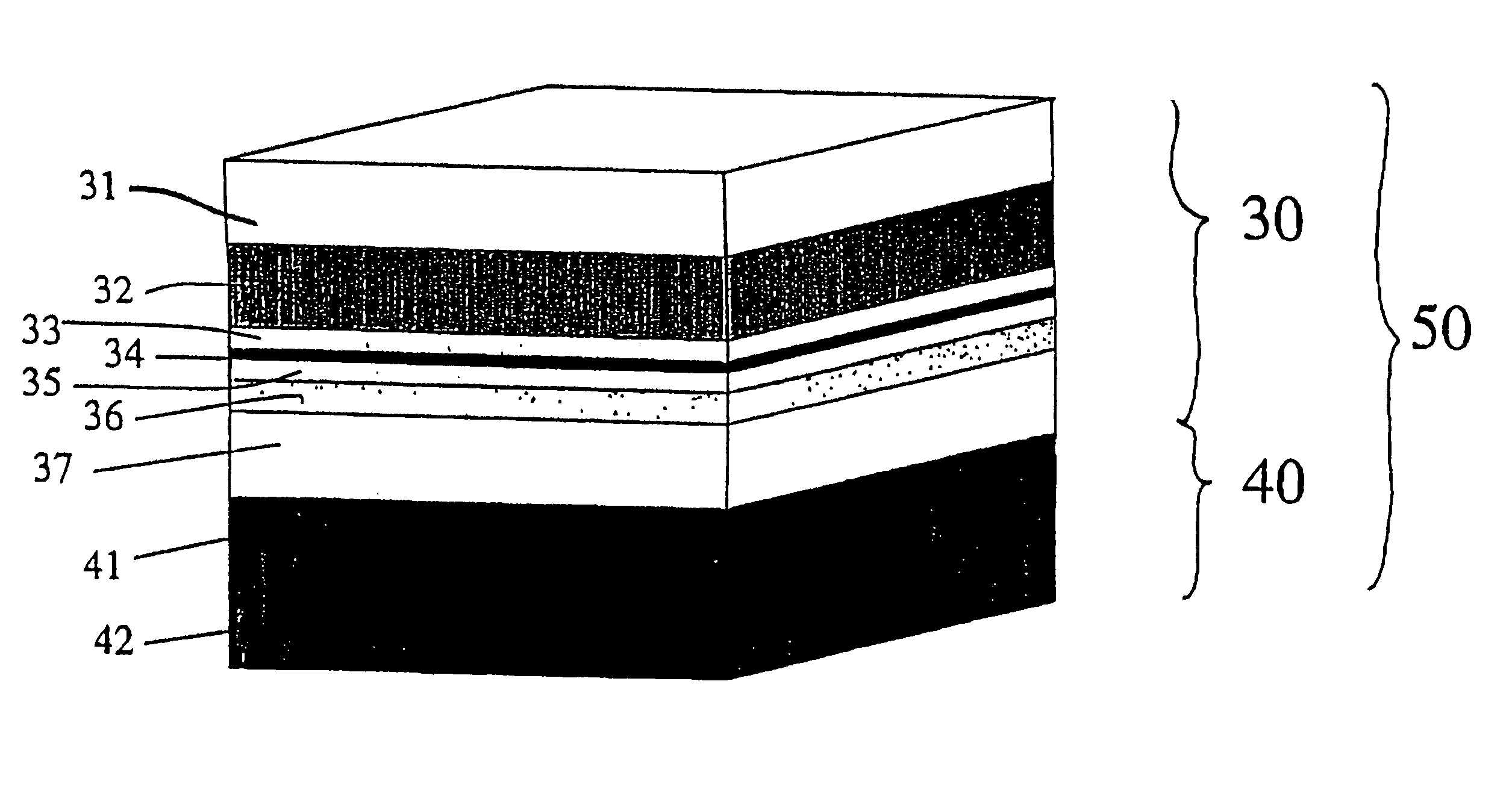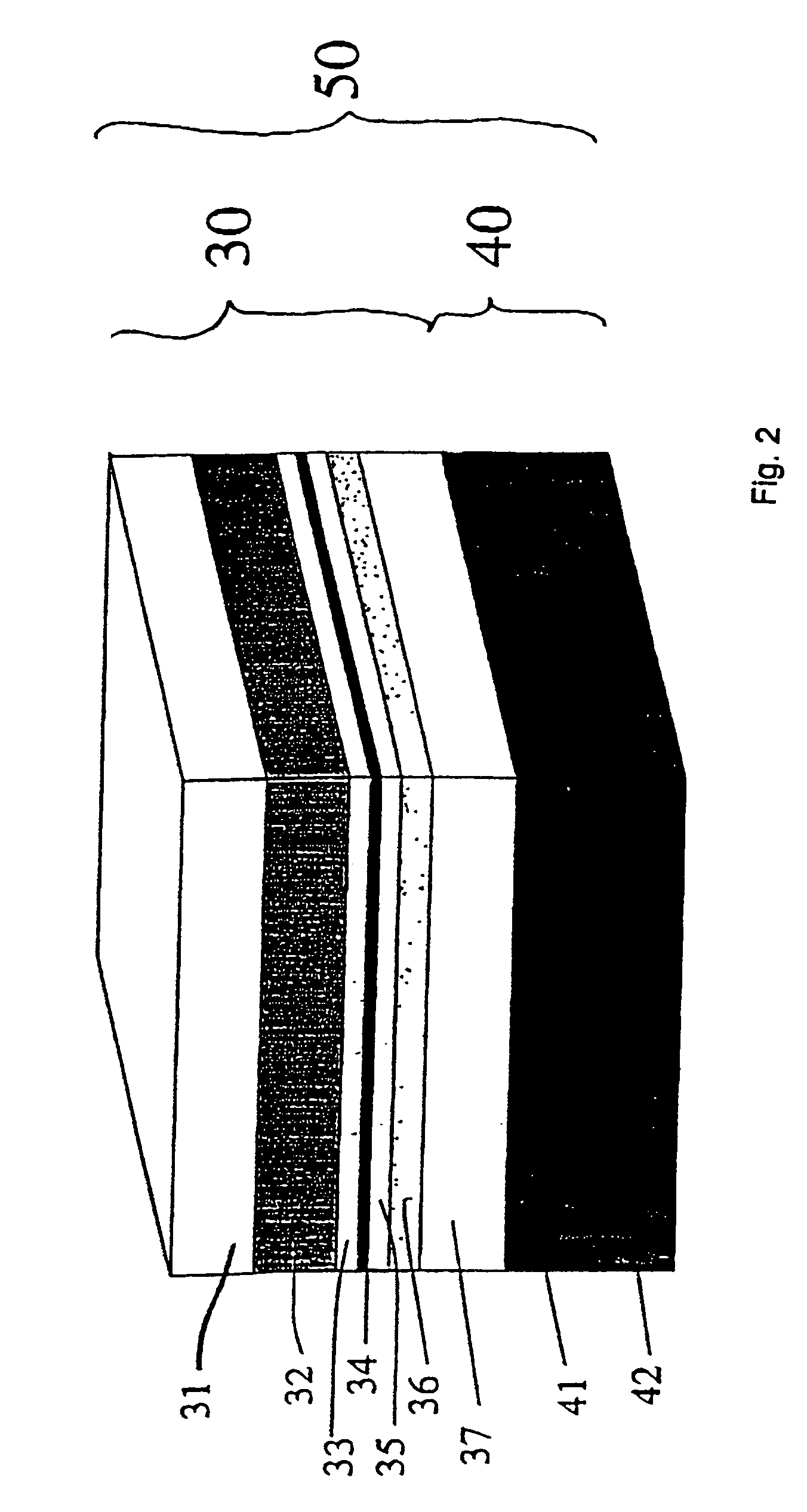Magnetic storage device
a magnetic storage device and random access memory technology, applied in static storage, digital storage, instruments, etc., can solve the problem of sense operations, the magnetic field induced by the current passing only in one line is not strong enough to switch the fms, and the set-up suffers from high power consumption during write operations
- Summary
- Abstract
- Description
- Claims
- Application Information
AI Technical Summary
Benefits of technology
Problems solved by technology
Method used
Image
Examples
Embodiment Construction
[0024]Further embodiments of the present invention shall now be described with reference to the accompanying drawings in which:
[0025]FIG. 1A shows a perspective view of a MRAM array with magnetic memory cells located vertically between bit and word lines.
[0026]FIG. 1B shows an enlarged view of one of the memory cells shown in FIG. 1A,
[0027]FIG. 2 shows a perspective view of a memory cell according to the present invention,
[0028]FIG. 3 shows the exchange field—voltage response of an MTJ memory cell in relation to the coercive field HC of the FMS according to the invention,
[0029]FIG. 4 shows schematically the diagram of the electric circuit formed by the MRAM array, and
[0030]FIG. 5 illustrates the voltage levels on the leads in the MRAM array according to the invention.
[0031]FIG. 1A and FIG. 1B have already been described.
CONSTRUCTION AND OPERATION OF THE MEMORY CELL
[0032]The memory cell 50 in FIG. 2. is formed as a series of layers similar to the one disclosed in U.S. Pat. No. 5,640,...
PUM
 Login to View More
Login to View More Abstract
Description
Claims
Application Information
 Login to View More
Login to View More - R&D
- Intellectual Property
- Life Sciences
- Materials
- Tech Scout
- Unparalleled Data Quality
- Higher Quality Content
- 60% Fewer Hallucinations
Browse by: Latest US Patents, China's latest patents, Technical Efficacy Thesaurus, Application Domain, Technology Topic, Popular Technical Reports.
© 2025 PatSnap. All rights reserved.Legal|Privacy policy|Modern Slavery Act Transparency Statement|Sitemap|About US| Contact US: help@patsnap.com



